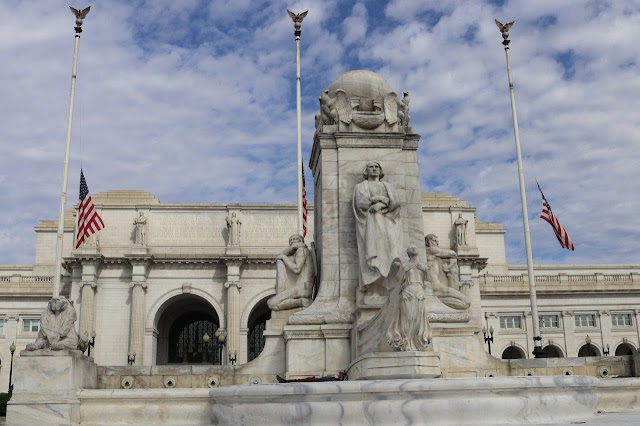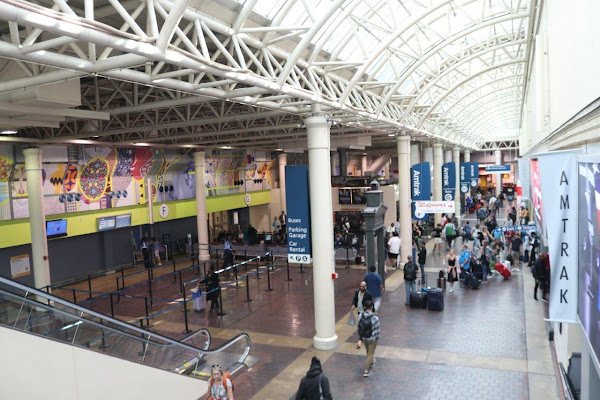I have visited Union Station many times, but my previous visits were limited to being a train passenger, and I never had the chance to truly appreciate its grand architecture, both inside and outside. However, on my recent exploration of Washington, D.C., I made a deliberate plan to pay Union Station a visit. I arrived at Union Station by metro and thoroughly explored both its interior and exterior.
I noticed that the restaurants that used to occupy the upstairs of the shopping area were no longer there. I have fond memories of dining in the past, and I wonder whether they disappeared due to the impacts of the Covid-19 pandemic or for other reasons. It's a shame they are no longer in operation, although there were still some stores open for business.
This time, I took the time to appreciate the architecture of Union Station from the outside, the area known as "Columbus Circle." However, I couldn't help but notice that there were homeless had made their homes at the base of the Christopher Columbus statue, and the smell of urine was noticeable when walking by.
The centerpiece of Columbus Circle is a 76-foot tall granite monument dedicated to Christopher Columbus, the Italian explorer often credited with discovering America. This monument, erected in 1892 to celebrate the 400th anniversary of Columbus's first voyage to the Americas, features a statue of Columbus atop a towering column. The fountain commemorating Christopher Columbus was not in operation.

Union Station in Washington, D.C. is a historic transportation hub and one of the most iconic landmarks in the city. It serves as a major transportation center, connecting Amtrak, MARC (Maryland Area Regional Commuter), and VRE (Virginia Railway Express) commuter trains, as well as various bus lines and the Washington Metro's Red Line. It is also a popular destination for shopping, dining, and cultural events.
Union Station was designed by architect Daniel Burnham and opened in 1907. It was built to replace several smaller, outdated train stations in the city and to create a unified transportation center for the region. The station was constructed in the Beaux-Arts architectural style, characterized by its grand facade and ornate interior.
Union Station's architecture is impressive, with its massive neoclassical facade, featuring columns, statues, and a large central clock tower. The interior is equally grand, with a vaulted, coffered ceiling and a large main hall known as the Main Hall or Columbus Plaza, which features marble floors and decorative elements.














No comments:
Post a Comment